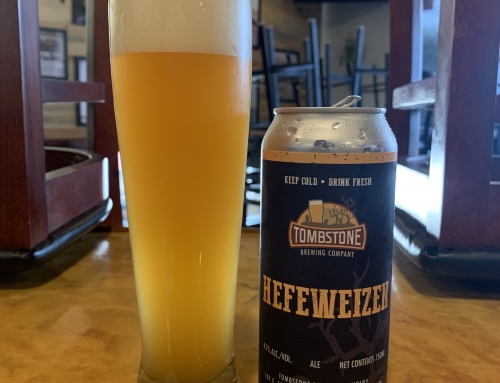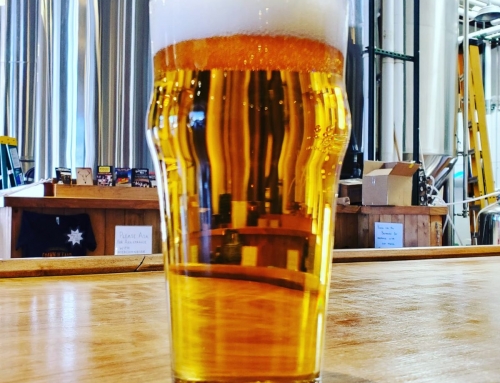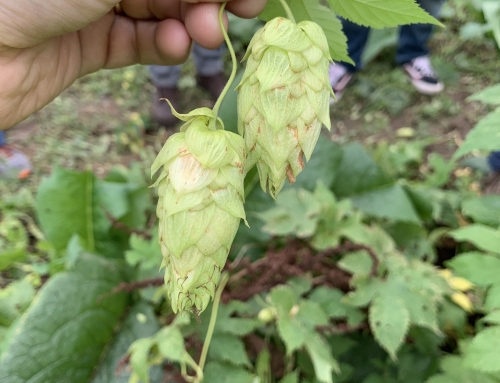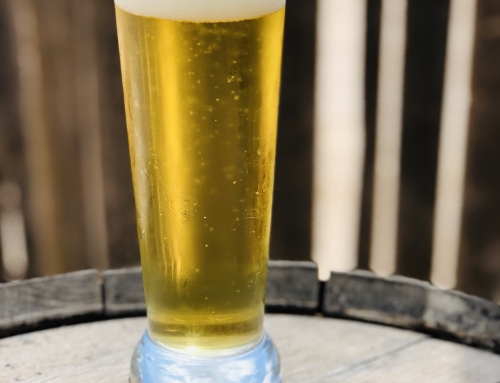Normally these blog posts result from hours of thought about something that I want to share with the world and they serve as a way for me to get something off of my mind. Today though, I haven’t had much time to think about this post as it’s been hectic at the brewery all day long. The topic of this post really stems from a stretch of unfortunate circumstances that have lead to a pretty exciting opportunity for the brewery.
Every year, I look forward to September as it’s the only time of year we get to brew with wet hops. Wet hops need to be used within 24 hours of harvesting and the best quality hops in the USA are not grown anywhere near Tombstone. This creates a huge logistical challenge to brewing those beers in a timely manner. All of our hops are supplied from Oregon and Michigan now, so wet hops need to be harvested, put directly onto a plane or refrigerated truck, and delivered to the brewery where a full kettle awaits their addition. That was the manner in which our Wet Hop Pale Ales (released on Saturday) were brewed. Brewing with wet hops is difficult, expensive, and very time consuming, but it can only happen once a year and the unique flavors from hops directly off the vine makes all the effort worth it.
When I was placing orders for wet hops a few months ago, my intent was to release a third wet hop beer using Idaho 7 which would be our Wet Hop IPA. Idaho 7 is a variety that matures weeks later than most other hops, so it looked like the timing would work out perfectly with our production schedule which would have had the beer being brewed tomorrow. Unfortunately, today I received bad news. The Idaho 7 we were planning on using was already browning and would not survive the delivery to Tombstone. It is great to have the confirmation that our suppliers won’t sell us an inferior product, and we have to be understanding of the change since this was the result of nature. There was no way to predict or avoid this situation. When I was informed of the issue, I immediately began looking for another variety that we could use as wet hops, but this late in the season, the harvest is basically complete and other than a few varieties I was not interested in using, nothing would be harvested from this point on.
Disappointment and panic both set in pretty quickly when I found out there was nothing I could do about getting wet hops. We already have a pallet of cans with Wet Hop IPA labels on them and we were missing out on an opportunity to provide a rare type of beer to our customers (plus, being a bit greedy… I really love drinking wet hop beers straight from the fermenter). As the disappointment began to really hit, I got a call from both of our hop suppliers letting me know that we could actually do something even a little more unique… Fresh hop beers!
Fresh hops differ from wet hops and the differences have been a source of confusion for years now as the terms have been used interchangeably by some brewers. Wet hops are (obviously) fresh, but fresh hops are not necessarily wet. When hops are harvested, they are cut from the vine and the hop cones are transported to a kiln where the hops are dried. Typically, after the kiln the hops are baled and put into cold storage where they are kept until they can be pelletized. While the hops sit in the bales, the aroma changes quickly in the first week before they become a (mostly) stable product. Fresh hops are not allowed to sit in the bales. The kilning process tends to concentrate the flavor of the hops and as the moisture is removed, the grassy, chlorophyll flavor dissipates with it. If the hops are used within a few days of being kilned, the highly volatile aromas remain in the hops.
Freshly kilned hops are a unique ingredient that few brewers have the opportunity to experience. One of my favorite beers, Celebration Ale by Sierra Nevada, is the most readily available fresh hop beer in America. Other than Celebration Ale though, I can’t think of another commercially available fresh hop beer that I’ve tried. A year ago I asked our growers about the possibility of getting freshly kilned hops and I was told that they weren’t set up to ship hops that way, except for maybe if I could take 200 lbs of a single variety. At our size, that’s out of the question. Most breweries that are at a production volume to deal with that quantity don’t have the ability to do one off releases or to block off portions of their schedule to allow a window of opportunity in order to be flexible for the changes in the hop harvest.
In many ways, this schedule change is actually more exciting to me than brewing another wet hop beer. I’ve never had the chance to brew with freshly kilned hops before and I’ve wanted to do so for years. The timing was somewhat coincidental too. We already planned on brewing a single hop Idaho 7 IPA using hops from Crosby Farms, the cans are already in the brewery, and now that beer is being turned into a fresh hop Idaho 7 IPA. The Wet Hop IPA is being changed to a fresh hop beer using Chinook and Cashmere from Hop Head Farms in Michigan and since the cans were already printed, there will be a sticker on the cans to indicate the change. The working title is “Almost Wet Hop IPA.” I’m not sure I’ll ever get the chance again to use freshly kilned hops from such high quality growers, so now that we’ve jumped through all the hoops to alter our schedule, I almost can’t believe how lucky I am to have the chance to use such a rare hop product!





Leave A Comment